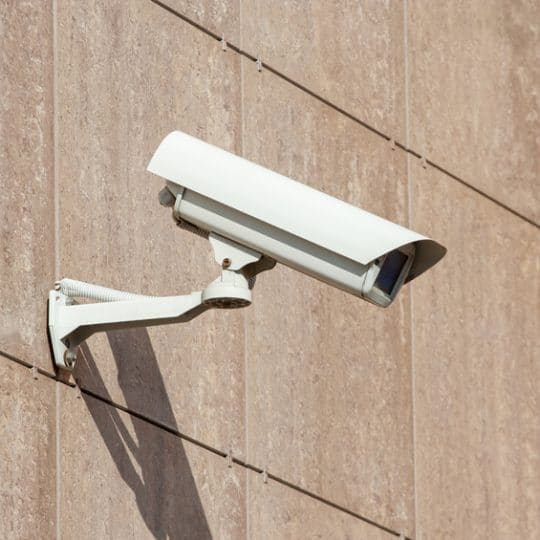Beginner’s Guide: How a CCTV System Works

A CCTV system (short for Closed Circuit television system) uses one or more video cameras to transmit video to a monitor, set of monitors, or video recorder. CCTV systems have become more popular in recent years, especially as the technology has improved and become more affordable.
The majority of CCTV cameras in use today are usually for surveillance and safety purposes. They are common in banks, casinos, department stores, pharmacies, family-run businesses, and even residential properties.
The difference between CCTV and regular TV
The difference between CCTV and standard TV is that standard TV openly broadcasts signals to the public. In contrast, CCTV broadcasts are not sent to the public. CCTV uses either a wired or wireless transmission to transmit the broadcast from the video cameras to the monitor(s) or recording device.
Wired vs. wireless CCTV systems
CCTV systems employ either a fixed cable (wired) or a wireless connection. A fixed cable physically connects the camera to the monitor or recording device. You can use coaxial cable, similar to regular home TV cables, in lengths ranging from 25 to 500 feet. Keep in mind that the longer the cable, the lower the quality of your signal. In that case, you might need a higher quality cable to better insulate the signal.
Wireless connections are popular because they allow you to position a CCTV camera nearly anywhere. You still usually need a plug for the camera itself. The video image is transmitted wirelessly from the camera to a monitor or recorder with an antenna, usually via a 2.4 Gigahertz frequency. Most wireless CCTV cameras can send data up to 200 feet away. A direct line of sight between the transmitting and receiving antennas is ideal.
Components of a CCTV system
1. Channels:
To put it simply, channels are the number of cameras that your CCTV system can support. Most CCTV systems can support four to 32 channels, in other words, four to 32 cameras. The number of channels you need depends on how large of an area you need to cover. You may want to get a DVR recording device that accommodates eight channels, even though you only have four cameras right now. Thus, you will have room to expand in the future.
2. Recording device:
A few CCTV system owners do not want to record surveillance footage. They might want to be able to see who is at the door of their home or business, offer customers a live view of a point of interest within the business, or deter criminals simply by the sight of security cameras. For owners of CCTV systems who want to record, however, they have a few options. Digital video recorders (DVR) allow customers to record with a variety of quality and performance options. These videos can be stored for a preset period of time or deleted and overwritten.
Another recording option is a network video recorder (NVR). With NVR, your system involves IP cameras that send images to a server, either on-site or off-site.
3. Camera image:
CCTV cameras can usually take both black and white and color video images. Some cameras even have night vision technology that allows viewing and recording even in very low light.
4. Frame rate:
Frames per second, fps, or “images per second,” is the amount of full frames that a video camera captures and transmits every second. Most CCTV systems can easily capture 30 or more fps (essentially, real time footage). But a 30+ rate requires a lot of storage. You probably don’t need a rate quite that high. Still, imagine how you’ll feel after an attempted robbery or break-in. Although the human eye can barely register the difference between 15 and 30 frames per second, a higher frame rate does allow you to capture and pause at a much more specific moment of video surveillance footage. In other words, you might be grateful for a higher fps later.
5. Pan tilt zoom functionality:
Some CCTV cameras are movable, allowing a remote operator to move the camera right to left (pan), up and down (tilt), and zoom in and out from tight to wide angles.
6. Special camera features:
Might you need a built-in mic, night vision technology, or something vandal-proof, waterproof, or extremely small for spying purposes? You can have it. Modern CCTV systems offer all of these features and more.
7. Recording and viewing software:
A top-of-the-line home CCTV camera system is only as good as the software you choose to record and view the video. For example, many camera manufacturers offer easy plug-and-play features with basic online controls. Apps matter, too. They give you the convenience to monitor and control your CCTV system from a tablet or smartphone. Check if the CCTV system you want has a compatible app for your phone. That way, you get relevant alerts sent straight to you when you travel.
Do you have questions about how a CCTV system works? Need help deciding on the right surveillance technology for your needs? Look no further than Security Five. Call on our team of experts at 610-323-9511 for a free consultation.
Special Offer for New Customers
$60 Off First Year of Monitoring
Hurry! Offer Expires July 15, 2025